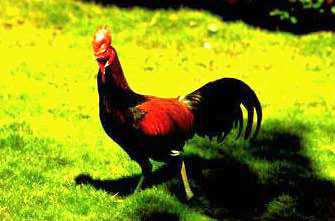 |
||||
 East
Java is one of the Republic of Indonesia's 27 provinces, occupying
an area of some 48,000 km2 just south of the equator. Including
the island of Madura, it accounts for a little more than a third
of Java's total land surface and supports a population of almost
33,000,000 inhabitants. To the east, across a narrow strait,
lies the island of Bali; to the west are the provinces of Central
Java and the Special Region of Yogyakarta. The northern and southern
coasts are markedly different. Silt deposited by the rivers which
empty into the calm and shallow Java Sea has caused the north
coast to grow slowly outwards over the centuries, while in the
south the Sunda Shelf, upon which the Indonesian archipelago
rests, drops steeply into the depths of the Indian Ocean a few
kilometres offshore, creating turbulent currents and dramatic
surf. East
Java is one of the Republic of Indonesia's 27 provinces, occupying
an area of some 48,000 km2 just south of the equator. Including
the island of Madura, it accounts for a little more than a third
of Java's total land surface and supports a population of almost
33,000,000 inhabitants. To the east, across a narrow strait,
lies the island of Bali; to the west are the provinces of Central
Java and the Special Region of Yogyakarta. The northern and southern
coasts are markedly different. Silt deposited by the rivers which
empty into the calm and shallow Java Sea has caused the north
coast to grow slowly outwards over the centuries, while in the
south the Sunda Shelf, upon which the Indonesian archipelago
rests, drops steeply into the depths of the Indian Ocean a few
kilometres offshore, creating turbulent currents and dramatic
surf.
From the mountains, numerous rivers flow down through the coastal plains to the sea. Two main waterways, the Brantas and Bengawan Solo, are lifelines for much of East Java's predominantly agricultural community. The former rises in the highlands to the northwest of Malang and follows a circuitous path for 314 km, passing through Blitar, Tulungagung, Kediri and Mojokerto before dividing into a number of smaller streams and meeting the sea in the Surabaya region. The famous Bengawan Solo, longest river in Java, has its source in the centre of the island to the west of Mt Lawu and stretches 540 km to join the coast at Gresik. Other important rivers include the Madiun, Konto, Sampeyan and Grindulu. Like the landscape, East Java's climate is varied, depending upon altitude. The plains and lower hill regions are hot and humid, making conditions ideal for wet rice cultivation (sawah). Further up in the hills the air becomes quite cool, while in high mountainous areas at night the temperature can drop to near zero. Hill regions are well suited for the cultivation of a large variety of fruits and vegetables, which thrive in the colder climate. Principal crops, aside from rice, include corn, tobacco, sugar cane, coffee, rubber, kapok, cloves, tea, cocoa, peanuts, soybeans and cotton. In addition, there are extensive plantations of teak and pine trees. East Java has a marked wet and dry sea son, with rain occurring between October and April. The wettest months are December, January and February. |
||||
Back To Discovering Menu |

